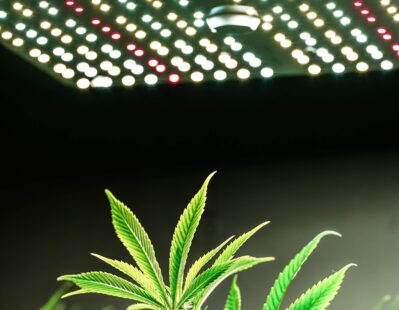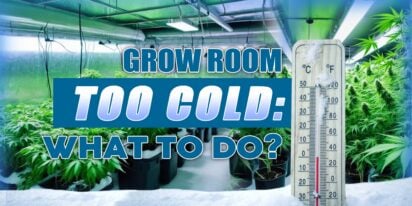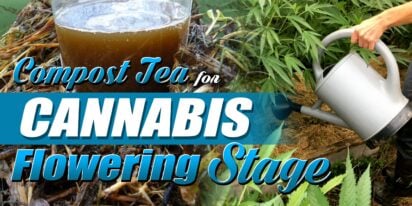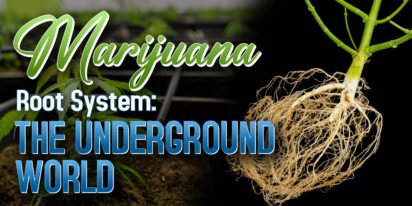
Are You 18 Or Over?
YesOr
No By clicking yes, you certify that you are over 18. By using this website, you agree to our legal disclaimer.605+ Cannabis Strains over 20 Breeders worldwide.
Table of Contents

When cultivating cannabis, few things are as crucial as proper light schedules. As a photoperiod plant, the amount of light your plant receives will dictate when it starts flowering and how heavy the harvest will be. By giving your cannabis plant 12 hours of darkness (uninterrupted) per day, they will begin to flower.
To maximize your ability to find success cultivating cannabis, we need to understand how to maximize the effectiveness of our lighting schedule though.
Today, we will take a deep dive into light schedules for Cannabis Seeds and the changes they must undergo for indoor and outdoor operations.
Light schedules involve the cycle of darkness and light used to bolster the growth of your plant. As cannabis plants require intense levels of light with changing needs throughout their growth, cultivators must be ready to change their system to meet the needs of their plants.
We can see how scheduled lighting can change based on the stage of your plant’s growth.
Every great cannabis plant began as a seedling. After you’ve acquired your seeds and have properly germinated them, you are ready to introduce a lighting schedule. At this stage of your plant’s growth, it is considered a seedling. Seedlings may have small roots, but they are not yet ready to be transplanted.
To maximize the lighting schedule of your seedlings, give the plant plenty of energy so that it can develop its root system. Developing a functioning root system is an energy-intensive task and thus requires roughly 18 hours of light per day with 6 hours of darkness to follow.
Growers have been experimenting with lighting schedules in the seedling phase since the first Cannabis Seeds were cultivated. Some growers opt for 20 hours of light with 4 hours of darkness to pump up the efficiency of their operation while still giving their plants time to catch their breath.
Here’s a warning though, seedlings do not require bright lights to prosper or grow well. Lights that overpower your seedlings can end up harming them, reducing their ability to grow healthily. Use weaker bulbs or dimmer lights to protect your plants from heat and potential burns.
Unless you are working with autoflowering seeds, opt for an 18/6 or 20/4 light schedule.
As one of the most important times in a plant’s life cycle, the vegetative stage must be carefully monitored to maximize later success. This stage is when the plant grows both taller and wider, developing stems, leaves, and the other biological matter necessary for its bud sites to flourish.
Whether you’re working with outdoor or indoor plants, you must provide them with at least 13 hours of light per day. Growers can potentially keep their plants in the vegetative state forever so long as they maintain short nights with a proper light schedule.
To maximize the growth of your plant while it is in this state, provide up to 24 hours of light per day. Some growers will opt for an 18/6 schedule to provide relief at night for their plants while still encouraging quick growth during those daylight hours.
For outdoor growers, you will see your plants transition from the vegetative stage late into the spring or early into summer, though every strain is different.
For novice to intermediate growers, avoiding lighting schedules can be as simple as opting for autoflowering seeds. Autoflowering seeds are strains that will flower automatically after roughly three months, no matter what lighting is provided by their grower. More simple and easier to implement than traditional outdoor Cannabis Seeds, autoflowering strains are a great way to get your first plants started.
With this being said though it’s important to pay attention to your seedbank’s instructions to make sure that you can find the right autoflowering strains for your operation.
With the vegetative state behind us, it is time to look ahead to the third and final phase of these plants’ life cycles. This stage occurs naturally for outdoor growers when their plants get 12 hours of sunlight per day. Outdoor flowering stages can last between 8 and 12 weeks, depending on the strain, the growing environment, and the health of the plant.
For indoor growers, a lighting schedule of 12 hours on and 12 hours off will help to initiate the flowering cycle. Once the cultivator has changed their lights over to this 12/12 schedule, they will have roughly six weeks to five months of growing time before their plants are ready for harvest.
Note For ALL Growers: Avoid any light pollution at night. Make sure that the plants are not exposed to light during the night or dark periods, even from spotlights or streetlights. Light pollution can confuse your cannabis plants, thus preventing them from flowering properly.
The world of autoflowering strains has fundamentally changed how many folks approach cannabis cultivation. Autoflowering cannabis plants are plants that have been crossbred with Cannabis Ruderalis. The resulting plant is a cannabis plant that flowers based on time rather than the light/dark schedule put in place by the grower.
Autoflowers traditionally have a short vegetative phase without the need to switch to a 12/12 schedule during flowering. Some growers will grow autoflowering strains with an 18/6 light cycle throughout the entire duration of their plant’s growth.
Light schedule suggestions for autoflowering cannabis include:
Properly lighting your cannabis plant is one of the most important steps in their growth. Seedlings don’t need a ton of light, vegging plants demand a lot of energy, and flowering plants must have at least 12 hours of darkness per night. With this all being said though, you should always be ready to experiment with your scheduling as genetics may cause variation between strains that might impact your overall results.

[ez-toc] In indoor gardening, maintaining an optimal temperature within your grow tent is crucial for the health and productivity of your plant

[ez-toc] Welcome to the delightful world of cannafudge crafting, where sweetness meets sophistication, and cannabis infusion adds a unique twis

[ez-toc] You’ve finished trimming your weed, but what about those leftover stems? Don’t throw them away! These seemingly useless bits can a

Feeling high can be an exhilarating experience, but it's essential to make the most of it by engaging in activities that enhance the sensation a

[ez-toc] Starting with planting cannabis seeds might seem simple, but how deep should cannabis seeds be planted for them to grow well. In this

[ez-toc] In the realm of cultivating cannabis, maximizing growth during the flowering stage is a top priority for growers. While various method

[ez-toc] Nutrient burn is a common issue among plant enthusiasts, often resulting from over-fertilization or improper nutrient application. It

[ez-toc] Welcome to our complete guide to dealing with harmful pathogenic mold in cannabis. For those who grow cannabis, preventing mold is vit

In recent years, there has been speculation about “did Shakespeare smoke weed?” This idea originates from a study by South African anthropol

[ez-toc] Welcome to the hidden world beneath the soil – the inside of the marijuana root system. While the vibrant leaves and resinous flower

Are You 18 Or Over?
YesOr
No By clicking yes, you certify that you are over 18. By using this website, you agree to our legal disclaimer.